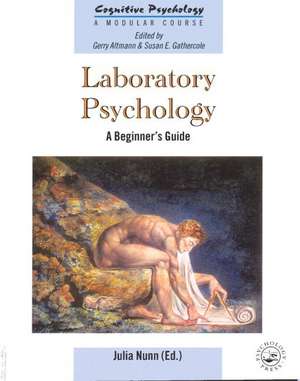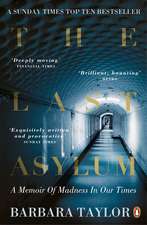Laboratory Psychology: A Beginner's Guide
Editat de Julia Nunnen Limba Engleză Hardback – 17 mar 1998
Preț: 764.20 lei
Preț vechi: 1102.79 lei
-31% Nou
Puncte Express: 1146
Preț estimativ în valută:
146.28€ • 158.94$ • 122.95£
146.28€ • 158.94$ • 122.95£
Carte tipărită la comandă
Livrare economică 21 aprilie-05 mai
Preluare comenzi: 021 569.72.76
Specificații
ISBN-13: 9780863777103
ISBN-10: 0863777104
Pagini: 192
Ilustrații: Illustrations
Dimensiuni: 172 x 216 x 17 mm
Greutate: 0.45 kg
Ediția:1
Editura: Taylor & Francis
Colecția Psychology Press
Locul publicării:Oxford, United Kingdom
ISBN-10: 0863777104
Pagini: 192
Ilustrații: Illustrations
Dimensiuni: 172 x 216 x 17 mm
Greutate: 0.45 kg
Ediția:1
Editura: Taylor & Francis
Colecția Psychology Press
Locul publicării:Oxford, United Kingdom
Public țintă
Postgraduate and UndergraduateCuprins
Why Does Psychology Need Methodology? P. Ayton Aims. Introduction. Is Psychology a Science? Methods for Acquiring Knowledge. Some Objections to Experimental Psychology. Conclusions. References. Notes. Between-subjects Versus Within-subject Designs, J. Hampton. Between-subjects vs. Within-subject Designs. Aims. Understanding, Predicting, Controlling. The Ideal Experiment. The Between-subjects Experiment. Why Use a Between-subjects Design? Getting a Result. The Power of Experiments. Factorial Designs. References. Within-subject Designs, E.J. Hellier. Introduction. Examples of Common Within-subject Designs. Advantages of Within-subject Designs. Limitations of Within-subject Designs. Overcoming the Limitations of Within-subject Designs. Choosing a Within-subject or a Between-subjects Design. References. Experimental Versus Correlational Methods, P. Ayton. Aims. The Simple Experiment: Active Observation. The Correlational Study: Passive Observation. Experimental and Correlational Approaches: A Comparison. The Analysis of Experimental and Correlational Studies. References. Questionnaire Design, I. Schoon. Aims. Introduction: The Function of a Questionnaire. Questionnaire Planning. Modes of Data Collection. Response Format. Question Wording. Questionnaire Layout. Criteria for a Good Questionnaire. References. People, Materials and Situations, D.B. Wright. Aims. "Make £5 by Taking Part in a Psychological Study": Recruiting Participants. Materials and Hypotheses. Situations for Psychological Research. Conclusions. References. Note. Ethics, J. Nunn. Introduction. The Rise of Ethical Concerns in Psychological Research. Ethical Guidelines. Translating Ethical Principles into Valid Research Methods. References. Writing Experimental Reports, Z. Kaminska. Aims. Are Reports Really Necessary? Format of the Report. Some General Advice on Writing Your Report. Producing the Report. Making Sense of a Journal Article, J.M. Gardiner. Aims. Introduction. Structure of an Article. Introduction to the Sample Article. General Rules for Reading Journal Articles. References. Author Index. Subject Index.
Recenzii
This book would be suitable for any psychology course that contains laboratory classes and/or an introduction to methodology and analysis. As far as I know, this is all psychology courses. The book aims to provide the background to laboratory classes: why do experiments at all, how to do experiments properly, and how to write them up. These are important and often neglected problems. This book tackles these problems head on, and is generally very successful in doing so. Its style is friendly and direct, and it should be a welcome addition to any student's armoury of useful texts. - Trevor Harley, University of Dundee
Descriere
Experimental design is important enough to merit a book on its own, without statistics, that instead links methodology to a discussion of how psychologists can advance and reject theories about human behaviour. This is the objective of this book.












